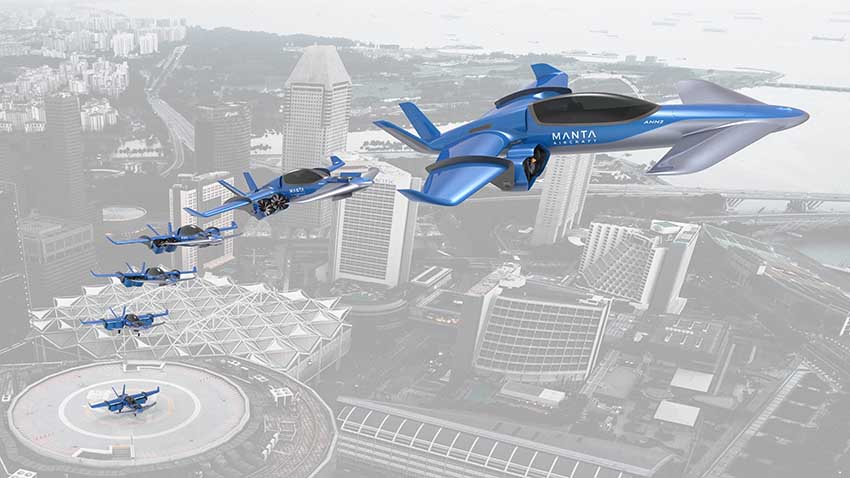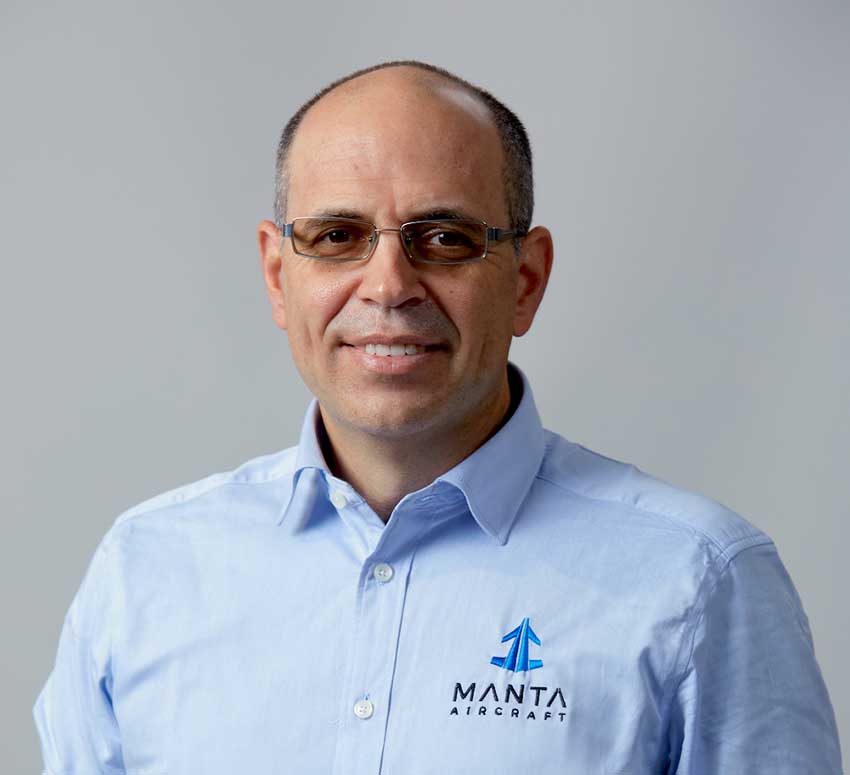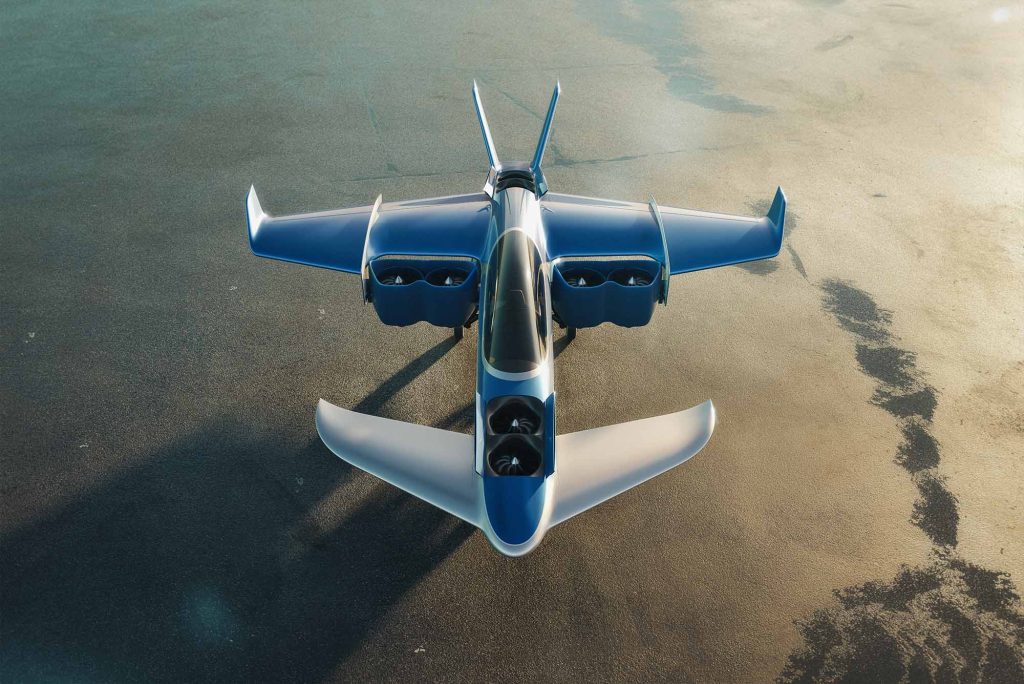Manta Aircraft is the OEM of a long range hybrid-electric eV/STOL (Vertical and Short Take Off and Landing) platform. Several models on the same base technologies, piloted or unmanned, fit to several markets and missions such as customers operating in utility & service aircraft market, business aviation and defense sector facing the problem that helicopters are expensive to use and maintain, while aircraft are confined to runways.
The company has engineered a solution that significantly reduces costs compared to conventional helicopters used for regional missions. Furthermore, it is not bound by traditional infrastructure limitations. The aircraft can take off and land without the need of a special infrastructure, giving unprecedented accessibility and enabling to reach areas previously inaccessible or difficult / long to reach.
The platform is designed to lowering carbon footprints and making a positive impact on the environment adopting greener propulsion systems, that can also evolve in time as soon as new technologies become available. Compared to eVTOL Air taxis, Manta Aircraft targets a regional and interregional market, offering long range and high cruising speed.
Interview with Lucas Marchesini, CEO of Manta Aircraft.

Easy Engineering: What are the main areas of activity of the company?
Lucas Marchesini: Manta Aircraft focuses on the design of its eVSTOL air vehicle platform “ANN”, as well as the development of the necessary subsystems such as the hybrid-electric propulsion, the human-machine interface and the flight control laws and system.
E.E: What’s the news about new products?
L.M: In contrast to most eVTOL players, who focus on short passenger flights and are tied to electric charging infrastructure, Manta Aircraft offers a scalable, flexible and innovative solution, based on a canard winged configuration, with 8 ducted fans and a very convenient hybrid electric propulsion, which makes the aircraft independent of infrastructure and, at the same time, allows operations in regional airspace of several hundred kilometers.
E.E: What are the ranges of products?
L.M: The ANN platform reaches a minimum flight range of 300 kilometers after a vertical takeoff and can triples this range, up to 800-1,000 kilometers, using a short runway of just less than 300 meters.
E.E: At what stage is the market where you are currently active?
L.M: Manta Aircraft will create an early impact in the new segment of eVTOLs by addressing immediate pain points and market demands in existing markets first. Manta Aircraft is focused on serving various private and business-to-business use cases, from experimental aircraft and defense initially, to utility services like transplantation organs transportation and disaster response. In the long term, Manta Aircraft envisions expanding to short-haul passenger flights, transforming the way people travel within and between regions.

E.E: What can you tell us about market trends?
L.M: After the initial exploit of the UAM, the sector has understood that the UAM is a business case not as interesting as the RAM (regional). Therefore, the new steering toward hybrid propulsion systems (the only ones allowing the required range for regional aviation), winged solutions and, soon, ducted fans. All characteristics that the Manta ANN platform has since the beginning, because it was born to target the RAM.
Therefore, we see a trend towards hybridization in combination with eco- or synthetic fuels instead of fully electric flights in the new segment of advanced air mobility, because it allows more energy on board, hence greater ranges and longer flight times. This makes the advanced air mobility efficient and exciting while significantly reducing the carbon footprint compared to conventional aircraft. Hydrogen propulsion developments are also very much in focus, although today these systems still can’t offer a high enough power/weight ratio for the eVTOL requirements to allow aircraft solutions with a meaningful payload and range. However, we at Manta Aircraft, have designed our eV/STOL platform in such a way that we are prepared to adopt the hydrogen power generation or battery only solution, as soon as these technologies will guarantee the performance for the regional applications we target.
E.E: What are the most innovative products marketed?
L.M: The Manta ANN is a platform, and from it we start creating two products: a two-seater ad a 4+2 seats. The 2-seater can be used as an unmanned aircraft, to perform drone missions as well. The 4+2 seats is a flexible arrangement that allows to transport passengers and cargo in a flexible way, easily reconfigurable. For all models derived from the same platform, the distinctive characteristic is the capability to take off and land vertically or from a short airfield, offering a range of some hundreds km at a flight speed between 250 and 300 km/h.

E.E: What estimations do you have for 2023?
L.M: We can clearly see that in 2023 the focus will be on infrastructure, namely vertiports for possible urban and regional air mobility applications. An exciting aspect will be the integration of different aircraft types with different configurations, requirements and CONOPS. In addition, we believe that aircraft autonomy will attract more interest for early applications such as special missions like cargo delivery in existing airspaces. On the aircraft development side, we think that more OEMs will start considering the ducted fans as a convenient alternative to their open propellers.
But above all, in our view, is the crucial aspect of an inclusive ecosystem that needs to be created. One that brings together OEMs, operators, infrastructure, regulating authorities, and develops and implements solutions for the entire market in order to actually bring the new era of air mobility to life.

